https://www.youtube.com/watch?v=c6_2tbCIq2M
How To Partially Encapsulate a Crawlspace _ Lowe’s Pro How-To
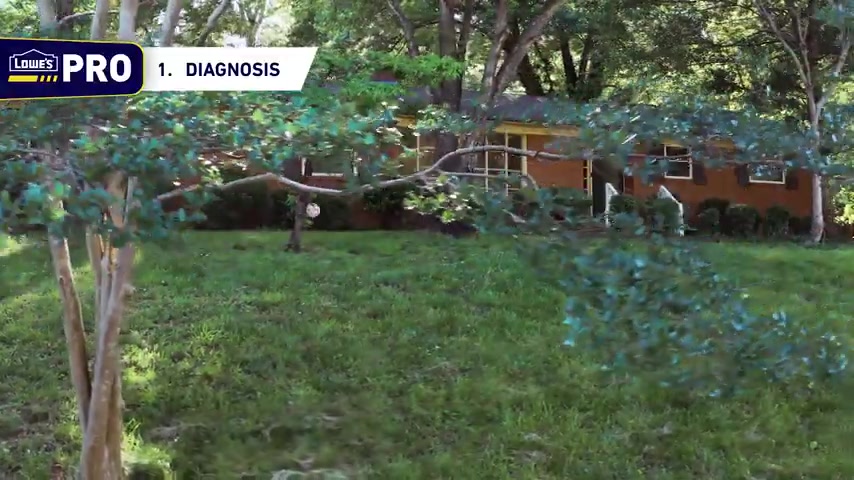
This demonstration is intended for professionals , only homeowners should not attempt these projects without first consulting a licensed professional step one diagnosis .
The first step in any crawlspace remediation project is to do a walkthrough of the property and diagnose the problem .
If you're able to get a digital diagram of the floor plan from the homeowner or a footprint of the house and land information through G I S before arriving on the property .
This will allow you to be sure that you are inspecting all potential problem areas when diagnosing the issues on site , begin the inspection process by walking around the outside of the home and identifying any drainage issues like down spouts , emptying and draining into the foundation of the home or any grading issues that may cause excessive water to enter the foundation .

After identifying any issues around the outside of the house , go underneath the house and continue the evaluation .
It's best to start where the homeowner thinks the problem is and then work your way to the rest of the crawl space from there .
Take moisture readings in all corners and the center of the crawl space to accurately gauge the overall moisture in the crawl space , take detailed notes of all problems .
Step two , create remediation plan .
Now that you've diagnosed the problems , create a detailed remediation plan .
This will be what you present to the homeowner and will also be your guide as to what materials will be necessary to complete the remediation .
Spending the time to plan and create a proper remediation strategy .
In the beginning will save you time and money throughout the job .
Now is also the time to contact an electrician to install a grounded G F C I in the crawl space to power a dehumidifier if needed do this before the remediation .

To guarantee there is powerful work lights and to power any tools needed to complete the remediation .
It also lessens the number of people who will need to access the crawl space after the moisture barrier has been installed , reducing the possibility of the poly being torn if possible have the G F C I installed directly to the main panel .
Step three repair structural elements .
If the project requires it , the next step is to remove and replace any rotten wood in the crawl space .
This includes girders , floor , joists band , joists and any rotten portions of the subfloor , make sure to provide any necessary support when replacing portions of rotten wood until new lumber can be properly sister into place .
Step four , remove debris .
Now that the structural elements of the house have been repaired , it's time to clean out any debris that has been left in the crawl space from the original construction .
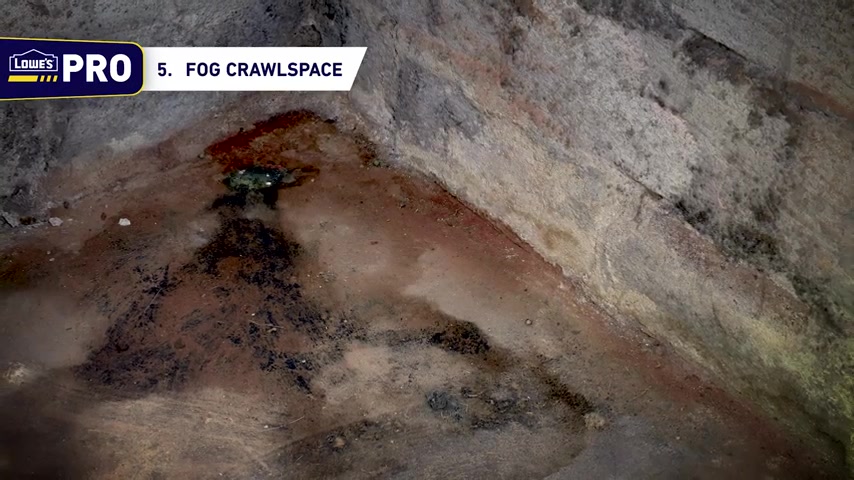
Previous repairs or by the homeowner step five fog crawlspace , moist environments generate fungal growth .
And over time that fungus can lead to mold growth .
Destroying the fungus before that happens , is crucial to kill off the fungus .
You'll need to fog the crawl space .
This is best done with a cold fogger machine filled with fungicide .
Be sure to follow specific manufacturer's instructions .
If there is any remaining fungus , remove it using a nylon brush and soap and water or a chemical cleaner .
Step six spray fungicide , apply a fungus and mold prevention solution to all exposed wood using a sprayer , adding a dye to the solution will allow you to make sure that you have even coverage and haven't missed any spots .
Step seven seal vents using one inch R five X P S rigid foam board measure and cut pieces to fill any vents to the exterior of the house .
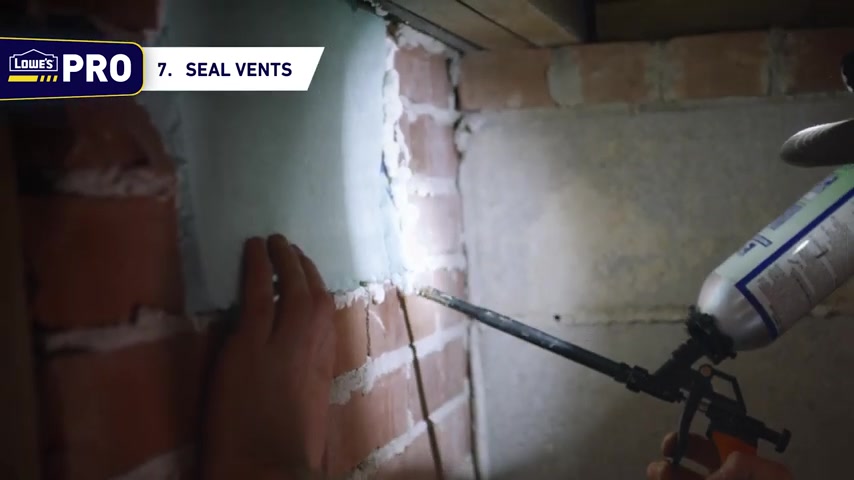
Once the X P S board has been fit into place covering the vents , use a spray foam to seal around all of the edges .
Step eight spray foam insulation , use a spray foam insulation in each banjoist bay between floor joist and along the inside perimeter of the home .
This creates a vapor barrier and increases the r value of the crawl space insulation and helps keep the temperature outside from impacting the temperature inside of the crawl space .
Be sure to read all manufacturers instructions before using use only as directed step nine , remove old moisture barrier after the repair and mitigation work inside the crawl space is complete .
Remove the old moisture barrier if there is one and create a level surface area , so you'll be able to properly install the new moisture barrier .
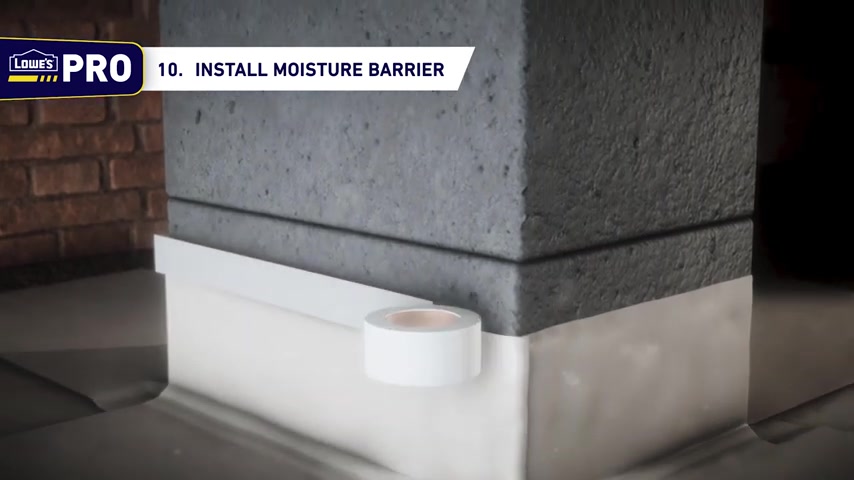
Step 10 , install moisture barrier for a partial encapsulation like this one , start by wrapping the base of all piers in the crawl space with pieces of the moisture barrier go at least four inches above the ground and tape tightly around the piers .
Cut relief slits into the moisture barrier at the bottom .
So it'll sit flat against the ground for pipes , cut out a hole in a piece of the moisture barrier for the pipe to fit through and then tightly tape it around the pipe .
Once you finish this detailed work line , the entire crawl space with the moisture barrier , allow the moisture barrier to come up along each wall at least four inches above the ground .
Tightly tape the moisture barrier to the wall , fold , corners and tape flat .
Keep the moisture barrier flat against the ground and overlap each seam by at least six inches and seal with tape step 11 .
Install dehumidifier .
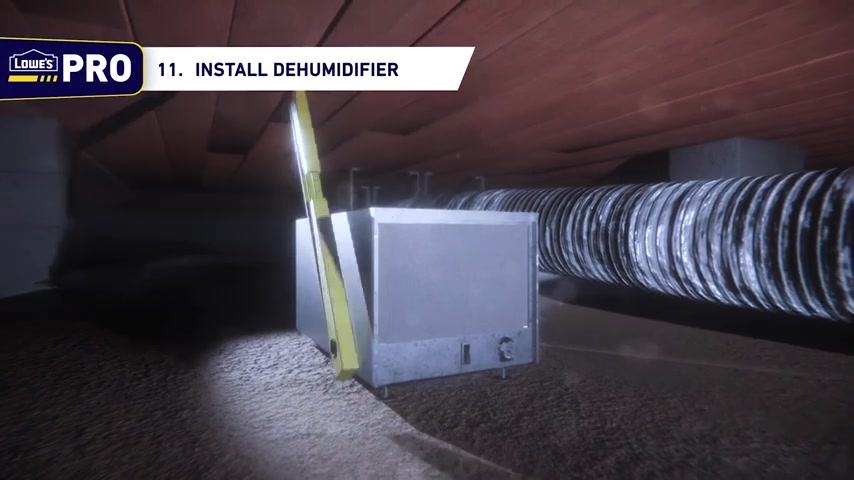
Make sure to use a level when installing the dehumidifier so that accumulated moisture flows correctly to the pump .
Drill a small hole in the foundation below the band seal for the pump drainage hose to reach the outside to drain properly , securely , attach the condensate pump to the dehumidifier and attach the drainage hose to the condensate pump .
Run an uninsulated duct from the exhaust on the dehumidifier to the tightest area of the crawl space .
In order to create a convective loop of dry air and moist air inside the crawl space step 12 monitor periodically .
In order to check that the condensate pump and dehumidifier are working properly that the duct hasn't been moved and that the moisture barrier hasn't been disrupted .
Are you looking for a way to reach a wider audience and get more views on your videos?
Our innovative video to text transcribing service can help you do just that.
We provide accurate transcriptions of your videos along with visual content that will help you attract new viewers and keep them engaged. Plus, our data analytics and ad campaign tools can help you monetize your content and maximize your revenue.
Let's partner up and take your video content to the next level!
Contact us today to learn more.